As we explained on Monday following the conclusion of the NBA’s 2024/25 regular season, the results of the play-in tournament helped move the lottery standings and the 2025 draft order one step closer to being officially set.
Here’s what we know now…
Lottery teams
Because No. 10 Miami made it through the play-in tournament and earned a playoff spot in the East, the lottery teams (and odds) are slightly different from the ones we projected on Monday.
The Magic and Heat claimed the East’s final two playoff spots and will face Boston and Cleveland, respectively, in round one of the postseason. The Warriors and Grizzlies locked up the Nos. 7 and 8 seeds in the West, lining up first-round dates with Houston and Oklahoma City, respectively.
As a result, the tentative lottery standings are as follows, per Tankathon:
| Team | 1 | 2 | 3 | 4 | 5 | 6 | 7 | 8 | 9 | 10 | 11 | 12 | 13 | 14 |
|---|---|---|---|---|---|---|---|---|---|---|---|---|---|---|
| UTH | 14 | 13.4 | 12.7 | 12 | 47.9 | – | – | – | – | – | – | – | – | – |
| WSH | 14 | 13.4 | 12.7 | 12 | 27.8 | 20 | – | – | – | – | – | – | – | – |
| CHA | 14 | 13.4 | 12.7 | 12 | 14.8 | 26 | 7 | – | – | – | – | – | – | – |
| NOP | 12.5 | 12.2 | 11.9 | 11.5 | 7.2 | 25.7 | 16.8 | 2.2 | – | – | – | – | – | – |
| PHI* | 10.5 | 10.5 | 10.6 | 10.5 | 2.2 | 19.6 | 26.7 | 8.7 | 0.6 | – | – | – | – | – |
| BKN | 9 | 9.2 | 9.4 | 9.6 | – | 8.6 | 29.7 | 20.6 | 3.7 | 0.2 | – | – | – | – |
| TOR | 7.5 | 7.8 | 8.1 | 8.5 | – | – | 19.7 | 34.1 | 12.9 | 1.3 | >0 | – | – | – |
| SAS | 6 | 6.3 | 6.7 | 7.2 | – | – | – | 34.5 | 32.0 | 6.8 | 0.4 | >0 | – | – |
| PHX* | 3.8 | 4.1 | 4.5 | 4.9 | – | – | – | – | 50.7 | 28.3 | 3.5 | 0.1 | >0 | – |
| POR | 3.7 | 4 | 4.4 | 4.8 | – | – | – | – | – | 63.4 | 18.5 | 1.2 | >0 | >0 |
| DAL | 1.8 | 2.0 | 2.2 | 2.5 | – | – | – | – | – | – | 77.6 | 13.5 | 0.5 | >0 |
| CHI | 1.7 | 1.9 | 2.1 | 2.4 | – | – | – | – | – | – | – | 85.2 | 6.6 | 0.1 |
| SAC* | 0.8 | 0.9 | 1.0 | 1.1 | – | – | – | – | – | – | – | – | 92.9 | 3.3 |
| ATL* | 0.7 | 0.8 | 0.9 | 1.0 | – | – | – | – | – | – | – | – | – | 96.6 |
(* Asterisks denote traded picks)
- The Sixers‘ pick will be sent to the Thunder if it’s outside the top six.
- The Suns‘ pick will be sent to the Rockets.
- The Kings‘ pick will be sent to the Hawks if it’s outside the top 12.
- The Hawks‘ pick will be sent to the Spurs.
Multiple tiebreakers will still be required before the pre-lottery draft order is locked in, since three pairs of lottery teams finished the regular season with identical records.
The teams listed above in italics were tied, so the following spots in the chart could still be flipped, pending the results of random tiebreakers:
- Phoenix Suns / Portland Trail Blazers (36-46)
- Dallas Mavericks / Chicago Bulls (39-43)
- Sacramento Kings / Atlanta Hawks (40-42)
For instance, if the Trail Blazers win their tiebreaker with the Suns, they’ll be the team that has about a 50/50 chance at the No. 9 pick in the lottery, whereas the Suns’ pick (controlled by the Rockets) would become far more likely to end up at No. 10 or 11.
Lottery teams that ended up with identical regular season records essentially have the same odds at a top-four pick as one another, though the clubs that win the tiebreakers will get one extra ping-pong ball combination at No. 9, No. 11, and No. 13.
Traded first-round picks
The play-in results also provided some clarity on certain first-round picks that were traded with protections.
Crucially, as we outlined earlier tonight, the fact that the Heat and Grizzlies made the playoffs on Friday means they’ll both give up their 2025 first-round picks, which were top-14 protected and will now land outside of that range. Miami will send the No. 15 overall pick to the Thunder, while Memphis will send either the No. 18, 19, or 20 pick (depending on the results of a Monday tiebreaker) to the Wizards.
Because the Warriors made it through the play-in tournament earlier in the week, their pick at No. 18, 19, or 20 will be conveyed to the Heat.
The Spurs, who control the Hawks‘ first-round pick, will now have a second lottery selection in addition to their own by virtue of Atlanta losing two consecutive play-in games and missing the playoffs. That pick will almost certainly end up at No. 13 or 14, depending on the results of Monday’s tiebreaker. There’s a very slim chance it could move into the top four.
The Hawks lucked out on Friday when the Grizzlies defended their home court and eliminated Dallas from the postseason. If the Mavericks had pulled out a win, Memphis would’ve entered the lottery as the No. 14 team in the lottery standings and could’ve pushed Sacramento up to No. 12, depending on the results of a Monday tiebreaker. The Kings will send their pick to the Hawks if it lands outside the top 12, which is highly likely to happen now that Sacramento will be at either No. 13 or 14 entering the lottery.
Playoff teams
Based on the play-in results, the draft order outside of the lottery will be as follows, pending tiebreakers:
- Oklahoma City Thunder (from Heat)
- Orlando Magic
- Minnesota Timberwolves (from Pistons)
- Washington Wizards (from Grizzlies) / Miami Heat (from Warriors) / Brooklyn Nets (from Bucks)
- Note: A random tiebreaker will determine the order from Nos. 18-20.
- Utah Jazz (from Timberwolves)
- Oklahoma City Thunder (from Clippers) / Indiana Pacers / Orlando Magic (from Nuggets) / Atlanta Hawks (from Lakers)
- Note: A random tiebreaker will determine the order from Nos. 22-25.
- Brooklyn Nets (from Knicks)
- Brooklyn Nets (from Rockets)
- Boston Celtics
- Phoenix Suns (from Cavaliers)
- Los Angeles Clippers (from Thunder)
The random tiebreakers for draft positioning will be conducted on Monday afternoon at 3:00 pm Eastern time, per Tim Reynolds of The Associated Press (Twitter link).
Once those tiebreakers are completed, we’ll publish a full pre-lottery order for both rounds of the 2025 draft.
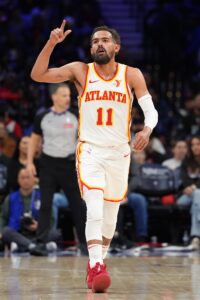
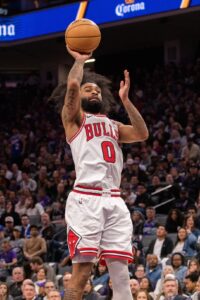
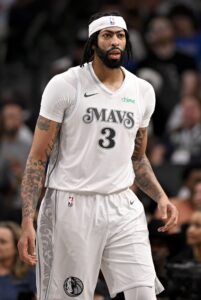 But neither team’s season played out as hoped. The Mavericks’ shocking decision to trade
But neither team’s season played out as hoped. The Mavericks’ shocking decision to trade 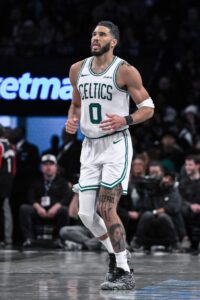 Boston Celtics (Over 58.5 wins): ✅ (61-21)
Boston Celtics (Over 58.5 wins): ✅ (61-21)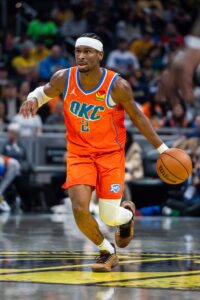 Oklahoma City Thunder (Over 56.5 wins): ✅ (68-14)
Oklahoma City Thunder (Over 56.5 wins): ✅ (68-14)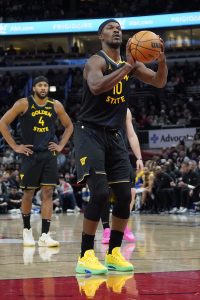 Although the Warriors and Grizzlies finished the season with matching 48-34 records, the two clubs were headed in opposite directions down the stretch.
Although the Warriors and Grizzlies finished the season with matching 48-34 records, the two clubs were headed in opposite directions down the stretch.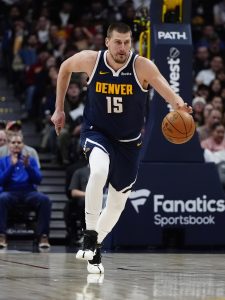 Here are the current standings from Nos. 4 through 10:
Here are the current standings from Nos. 4 through 10: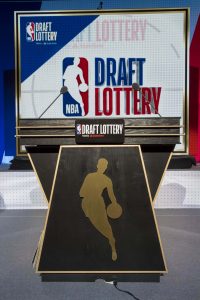 The 2025 draft lottery will be the seventh one employing the format that was
The 2025 draft lottery will be the seventh one employing the format that was 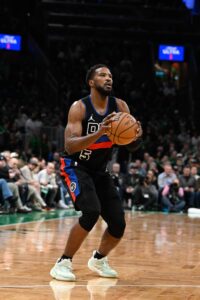 The salary limitations that apply to Non-Bird rights are more severe than those pertaining to Bird rights or Early Bird rights, so in many cases, the Non-Bird exception may not be enough to retain a well-regarded free agent. For instance, the Bucks held
The salary limitations that apply to Non-Bird rights are more severe than those pertaining to Bird rights or Early Bird rights, so in many cases, the Non-Bird exception may not be enough to retain a well-regarded free agent. For instance, the Bucks held